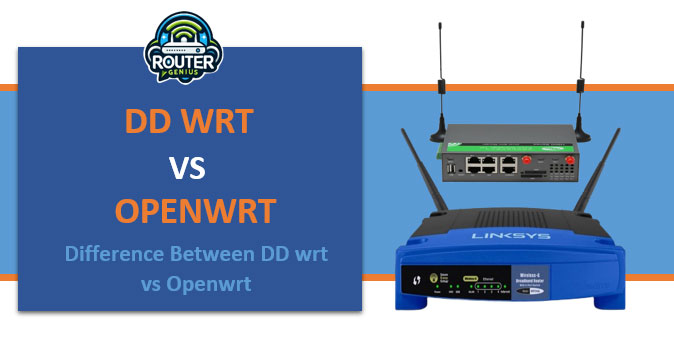Introduction
If you want more control over your wireless router beyond the basic features, third-party router firmware like DD WRT vs OpenWRT are great options to consider. Both allow unlocking additional functionalities and breathing new life into older router models.

However, choosing between DD-WRT and OpenWRT can be difficult as they have important differences. This comprehensive guide will help you determine which open source firmware is best suited for your needs. We’ll look at aspects like compatibility, features, setup process, updates, and more.
What are DD-WRT vs OpenWRT?
Let’s start with what these firmware projects are. DD-WRT vs OpenWRT or OpenWRT vs DD-WRT are built from Linux to add more capabilities to routers.
- DD-WRT started in 2005 and mostly one person works on new versions for specific Linksys and other router brands.
- OpenWRT began earlier in 2004 with a team of developers collaboratively improving its code on GitHub to run on many router types.
Both allow customizing routers beyond what the original firmware allowed.
Main Features
Some key capabilities both provide through their interfaces and extra software packages include:
- Control WiFi network settings like passwords, guests, bandwidth control
- Manage which internet ports are open and add VPN apps
- Install firewalls and security tools to block unwanted access
- Connect USB drives to share files and stream media to devices
- Administer settings remotely from any device using SSH
- Get more packages and tools from online repositories
So in terms of features, they achieve similar things once installed on your router.
Router Compatibility
OpenWRT is supported on over 500 router models tested by its community. This is because it can compile for different hardware types.
DD-WRT officially works with about 200 router models that it has optimized code for specifically. Installing on unsupported routers may have issues.
Some common routers both support include Linksys, Netgear, TP-Link. OpenWRT also works well on newer high-end routers and ones using Broadcom or Realtek chips.
So OpenWRT is better if you have an unusual or new router model not officially on DD-WRT’s shorter compatibility list.
Installation Process
DD-WRT provides downloadable pre-made firmware files that simply need flashing to supported routers – very easy setup.
OpenWRT lacks pre-made firmware. You must compile a custom version from source code for your specific router using guides on their wiki. This takes more technical skill than DD-WRT.
However, compilation means OpenWRT can potentially work on any compatible router by customizing for that hardware. Both communities help with any issues.
So DD-WRT offers faster plug-and-play installation when supported, while OpenWRT allows more flexibility but is more complex to install initially.
Router Performance
In general, third-party firmware introduces some performance reduction versus factory settings due to added features. But for normal home internet use, any differences are negligible with either DD-WRT or OpenWRT.
OpenWRT may have a slight advantage in optimized memory and CPU usage – it dynamically loads only required components, taking up less space.
So both maintain satisfactory speeds while providing additional functionality. Newer and more powerful routers see less performance impact overall.
User Interfaces
DD-WRT aims for a clean and uncomplicated interface to clearly show important settings. This makes finding things easy, suitable for beginners.
OpenWRT focuses more on power users and developers, with an interface featuring every option but a steeper learning curve.
DD-WRT still includes advanced options hidden away. Newer OpenWRT versions also simplify their interface. In the end, either gets the job done well as you learn to use it.
Getting Updates
DD-WRT receives major new releases every 1-2 years on average containing important changes and fixes. But older DD-WRT versions may not get long-term support and become insecure over time.
OpenWRT uses a rolling release model. This means new versions come out frequently, every 4-6 months, with frequent changes and security patches. It supports older versions for 7-10 years or more.
So OpenWRT keeps your router safer and up-to-date with latest features much longer through consistent, ongoing development and support for old releases.
Main Differences
To summarize the openwrt vs dd wrt key points of comparison:
- OpenWRT is compatible with far more router models and hardware types
- DD-WRT provides simpler plug-and-play installation on supported routers
- Both achieve similar advanced functionality once installed
- OpenWRT tends to optimize resource usage better on some routers
- DD-WRT has the easiest learning curve interface for beginners
- OpenWRT offers significantly longer useful lifespan through updates
Conclusion
In conclusion, DD-WRT remains a top choice when your router is officially supported, as it provides hassle-free setup. However, OpenWRT is generally the better long-term option thanks to its wider compatibility, active development and focus on backwards compatibility through updates – keeping older routers secure for longer. Consider your specific needs, but this guide should aid in deciding between DD-WRT versus OpenWRT.

Leave a Reply